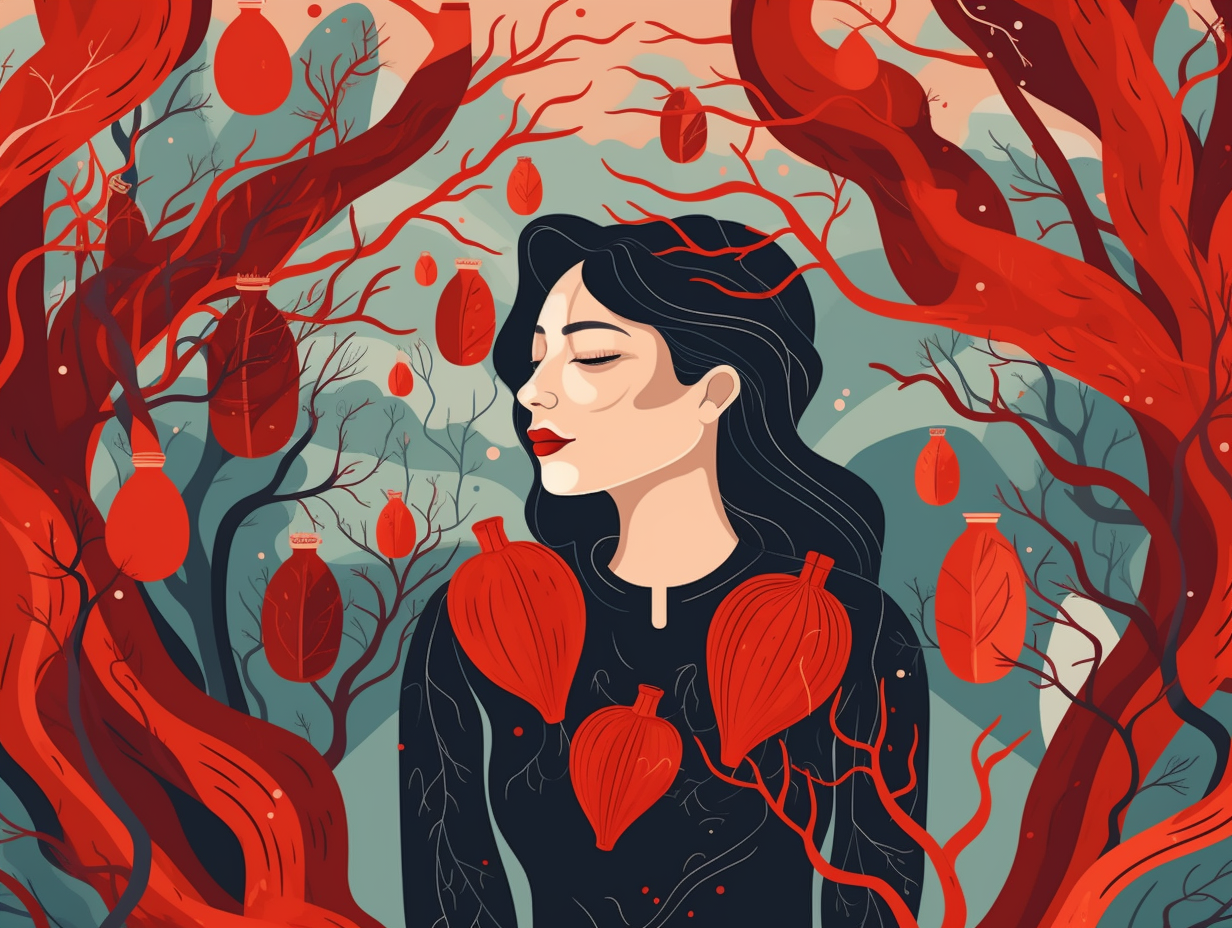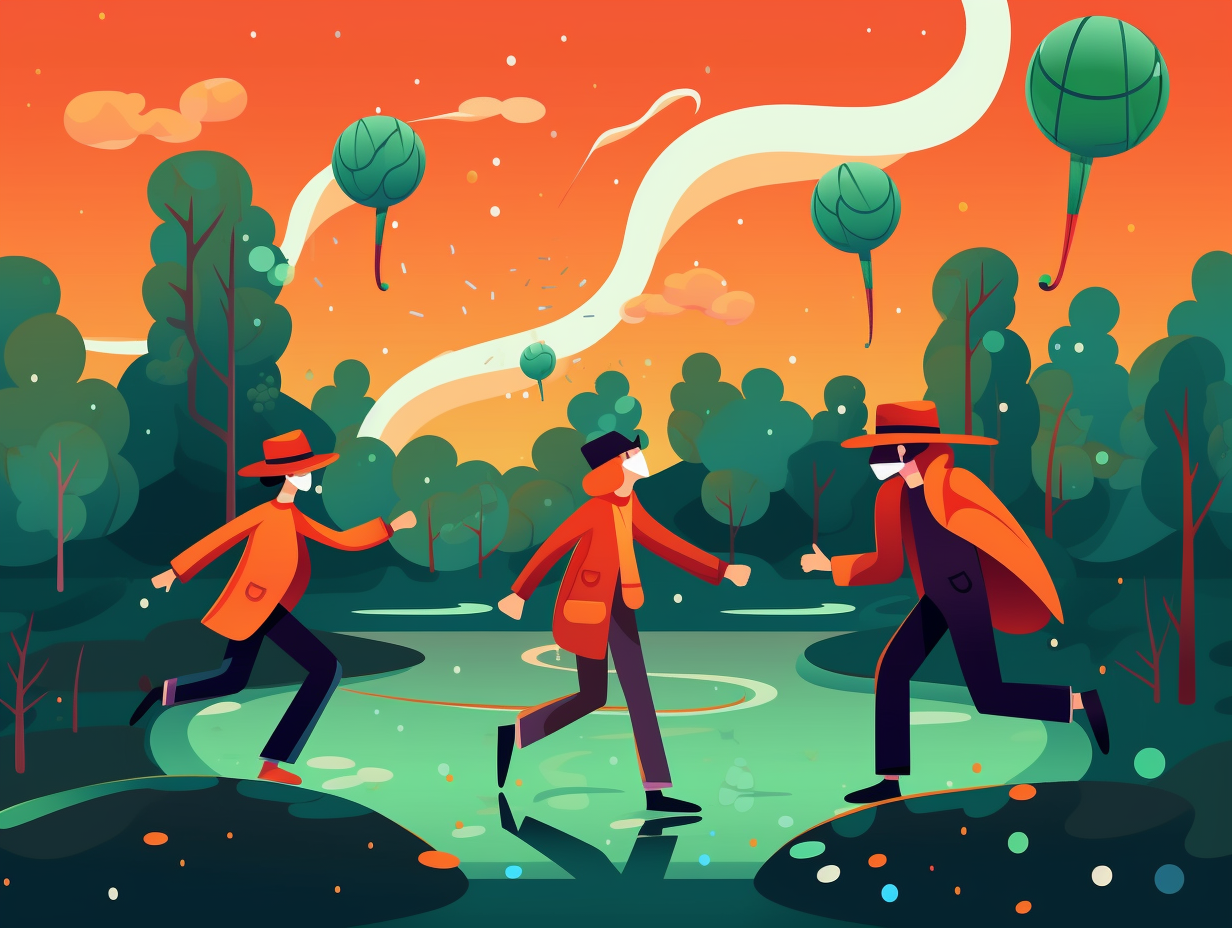Discover the Wonders of Evolution: Top 12 Fun Facts About Natural Selection You Never Knew!

1. Giraffe's Growth Spurt
As giraffes reach new heights of success in the Salad Bar of Life, they've got their necks on the line to prove nature's ultimate growth spurt: Through natural selection, genetic mutations that benefit an individual's survival, like giraffes' long necks, get passed down through reproduction. This results in a new generation better equipped for survival and broadens the chances of enjoying those hard-to-reach leaves!
Source => nhm.ac.uk
2. Sickle Cell's Sneaky Side
You'd think Mother Nature would be more of a helicopter parent when it comes to her offspring's genes, yet some troublesome genetic traits slip past her evolutionary radar like a teenager sneaking out past curfew: Case in point, the sickle cell disease gene hangs around because it can also provide a resistance to malaria, illustrating that not all genetic variations are evolutionarily useful and natural selection prefers to dabble in hereditary variants.
Source => medlineplus.gov

Dive into the mysterious world of the deep sea anglerfish, where females lure prey and potential mates with a glowing bait, while tiny males attach for a brief encounter, leaving their offspring to a unique unloving start in life. 🌊✨🐟
=> Fun Facts about Evolution
3. Speedy Evolution Express
Hold on to your Darwin-fish car decals, folks, because evolution is putting the pedal to the metal: natural selection can occur rapidly in response to environmental changes, leading to quick adaptation and significant alterations in a species over just a few generations – so buckle up, because the survival of the fittest is not always a slow ride!
Source => byjus.com
4. Eye Spy, Evolved
It's a bird! It's a plane! No, it's just another person with glasses because natural selection decided to spare the eyes of our ancestors: Contrary to popular belief, natural selection hasn't caused poor eyesight to be more common these days—eye defects have always existed, but didn't impede survival or reproduction in the past. If society collapses and we're back to brawling for resources, those with eagle eyes might have an advantage, but our tech-savvy solutions like glasses and contact lenses allow even the visually impaired to pass on their genes today.
Source => theguardian.com

5. Bacterial Evolution Dance
Who needs fast food when you've got fast-evolving bacteria, right? Well, not so fast there, buddy: Recent studies found that spore-forming bacteria, which have longer generation times, actually evolve more slowly than nonspore-forming bacteria, defying the belief that shorter generation times lead to faster evolution. It turns out the rate of molecular evolution in bacteria is more like a dance orchestrated by factors such as generation time and environmental conditions.
Source => pubmed.ncbi.nlm.nih.gov
6. Finch Family Flash
Who says lovebirds can't make history? The Galápagos finches sure know how to strut their evolutionary stuff: In a 31-year study on Daphne Major island, a male finch and its descendants evolved into an entirely new species in just one generation, proving that natural selection doesn't always have to take ages to make a difference – now that's one speedy family tree!
Source => nhm.ac.uk
7. Lactose's Dairy Drama
If lactose intolerance had been invited to a party 20,000 years ago, it would've been the social outcast; the personification of a dairy drama queen: Today, we know that adult lactose tolerance is a relatively recent evolutionary adaptation, caused by factors like increased milk consumption during famines and the development of cheese and yogurt production, making human survival a bit cheesier and more digestible.
Source => npr.org
8. Plant Dating Game
When plants play "The Dating Game": their flower color can make or break their shot at love! Seriously though: natural selection often works on existing genetic variations, such as fine-tuning a plant's flower color to be more enticing for pollinators, ensuring its optimal chances at reproduction and increasing its dominant presence in the population over time.
Source => medlineplus.gov
9. Reality TV Genetics
What do natural selection and reality TV stars have in common? They're both fabulous at drawing attention, but sometimes really bad at making decisions: Surprisingly, natural selection can be less effective in eliminating harmful recessive genes from populations, as these rare alleles are hard to "see" until they hit a particular frequency, leaving genetic drift to cause random ups and downs in these traits over time.
Source => nature.com

10. Moths Going Goth
When moths go goth: Over 100 species of these nocturnal fashionistas have been observed trading in their pastel wing patterns for darker hues in polluted forests. This edgy transformation, known as industrial melanism, gives the shadow-winged trendsetters increased survival advantages in their grime-infused surroundings. Talk about flying under the radar!
Source => askabiologist.asu.edu
11. Lemonade Ancestry
When life gives you lemons, it's probably just convergent evolution at play: Different species can evolve strikingly similar features thanks to adapting to shared environments and challenges, not because they have a common ancestor. But don't let that fool you into thinking you can trace all your family trees back to the same lemonade stand!
Source => sciencedirect.com
12. Fishy Human Origins
You might've heard of "sleeping with the fishes," but what about descending from them? Anaximander claimed that humans evolved from our aquatic friends, starting life as little egg crackers: In reality, this pre-Darwin philosopher wasn't too far off! Though lacking scientific method, Anaximander's quirky idea aligns with the fact that humans can trace our ancestry back to fish – a notion later refined and proven through Charles Darwin and Alfred Russel Wallace's theory of evolution by natural selection in 1858.
Source => nationalgeographic.org
Related Fun Facts




















